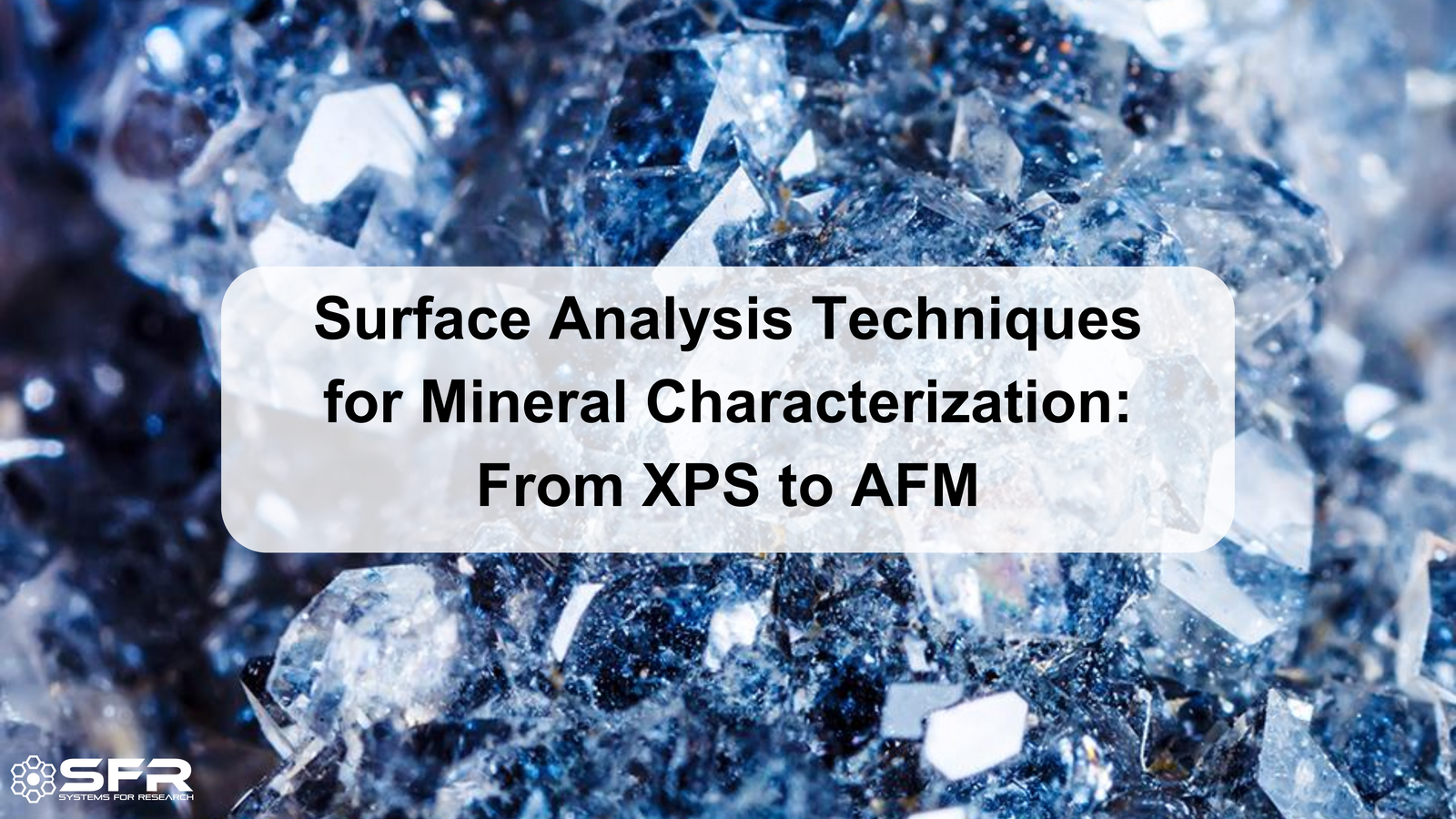Your Cart is Empty
In the field of mineral research, understanding surface properties is crucial for a wide range of industrial and scientific applications. From catalysis to material processing, the surface interactions of minerals can dictate their functionality, reactivity, and long-term stability. With advances in technology, surface characterization has evolved, offering deeper insights through techniques like X-ray Photoelectron Spectroscopy (XPS) and Atomic Force Microscopy (AFM).
This article explores how these powerful tools are transforming our understanding of mineral surfaces and what it means for industries that depend on precise surface control.
When we think of minerals, it's often easy to overlook how critical surface properties are. However, from adsorption processes to catalytic reactions, the surface is where much of the magic happens. Understanding the composition, structure, and chemical state of mineral surfaces helps researchers optimize everything from extraction processes to material design.
Surface analysis techniques allow scientists to probe the atomic and molecular structures that determine these interactions. The two techniques we’ll focus on, XPS and AFM, offer complementary insights, from elemental composition to nanoscale surface morphology.
X-ray Photoelectron Spectroscopy (XPS) is one of the most valuable tools for analyzing the chemical composition of mineral surfaces. By measuring the kinetic energy of electrons emitted from a sample when it's irradiated with X-rays, XPS provides elemental and chemical state information about the material's surface, typically within the top 10 nanometers.
XPS operates based on the photoelectric effect, where X-ray photons interact with the surface atoms of a mineral, causing the ejection of core-level electrons. The kinetic energy of these emitted electrons is then measured, allowing the identification of elements present and their oxidation states. This technique is incredibly sensitive, capable of detecting surface contamination or oxidation that might occur due to environmental exposure or industrial processes.
For mineral scientists, XPS is indispensable in identifying surface compositions after processes like leaching or flotation. It can reveal how minerals have chemically transformed or interacted with reagents, aiding in optimizing extraction or refining processes. For example, in copper mining, XPS can be used to analyze surface oxidation states, which directly impact the efficiency of flotation separation.
Moreover, XPS is often employed to investigate catalytically active mineral surfaces, such as those in industrial gas reactions. By examining the chemical environment of catalytic sites, researchers can design more efficient and sustainable catalysts for industrial processes.
While XPS excels in chemical analysis, Atomic Force Microscopy (AFM) provides a window into the physical landscape of a mineral's surface. AFM doesn't rely on electrons or photons but instead uses a sharp probe to scan across the surface of a sample, mapping out its topography at the atomic scale.
In AFM, a cantilever with a sharp tip (usually made of silicon or silicon nitride) scans the surface. As the tip moves over the surface features, forces between the tip and the sample cause deflections in the cantilever, which are measured using a laser beam reflected off its back. These deflections are then translated into a high-resolution map of the surface topography.
AFM's strength lies in its ability to provide three-dimensional images of surface roughness, texture, and nanoscale features. In mineral research, AFM is used to study everything from crystal growth patterns to wear mechanisms on geological samples. For instance, AFM can be used to observe the nano-scale roughness of calcite or quartz surfaces, revealing insights into how these minerals weather or fracture under mechanical stress.
AFM is also a key tool for investigating the effects of surface treatments, such as polishing or coating, on mineral surfaces. The ability to visualize how surfaces respond to these modifications helps improve materials for a wide range of industrial applications, from construction to electronics.
The true power of XPS and AFM lies in their complementary capabilities. While XPS provides a chemical “fingerprint” of the surface, AFM offers a physical map of surface features. Together, they give researchers a holistic view of mineral surfaces, allowing them to correlate chemical composition with physical characteristics.
For example, combining these techniques can help identify how surface roughness, as seen by AFM, correlates with oxidation states measured by XPS, providing insights into degradation processes that affect material performance.
The integration of surface analysis techniques like XPS and AFM is pushing the boundaries of what’s possible in mineral science. By unraveling the complex relationships between surface chemistry and physical structure, researchers are gaining unprecedented control over material properties.
In the energy sector, this knowledge is being applied to develop better catalysts for fuel cells and batteries. In mining, surface analysis is optimizing processes like flotation and leaching, making them more efficient and sustainable. Even in environmental science, understanding how minerals interact with pollutants on their surfaces is leading to breakthroughs in clean-up technologies.
At the core of these scientific advancements are the dedicated researchers using XPS and AFM to push the limits of what we know about mineral surfaces. Their work is not just about data—it’s about solving real-world problems, from increasing efficiency in resource extraction to designing more resilient materials for the future.
As we continue to develop more precise and powerful surface analysis techniques, we are inching closer to answers that could reshape industries. Whether it’s enhancing material properties or improving environmental sustainability, surface science holds the key to unlocking new possibilities.
